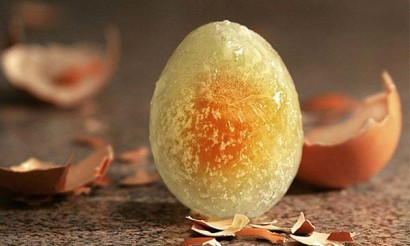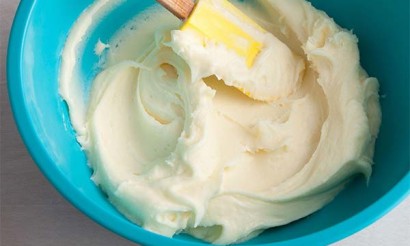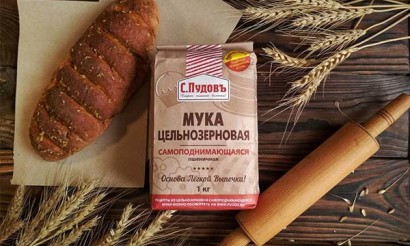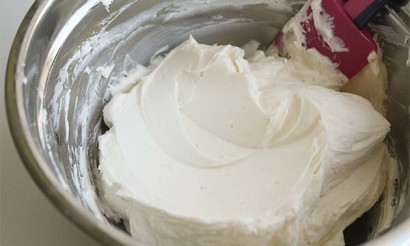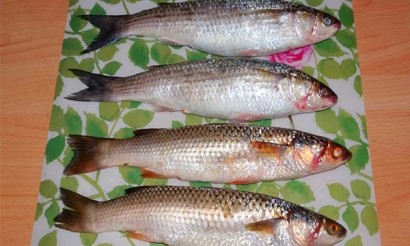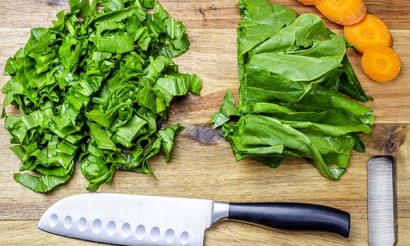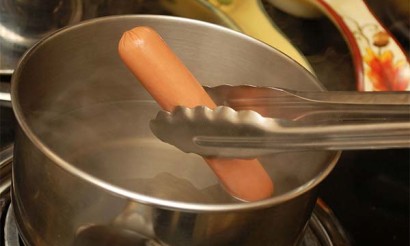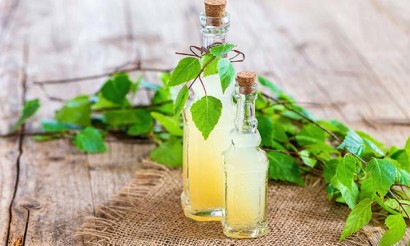Purple and green basil: what is the difference?
Basil has been known to man since ancient times. It has a pleasant taste and aroma. The greens are used not only in the preparation of dishes. From basil still make natural cosmetics. In addition, it is in demand by folk healers.
- What is basil
- Types
- What is the difference between green basil and purple basil
- Which basil is healthier: green or purple
- Can they be combined in a dish
- The best green basil varieties
- Broadleaf
- Eugenolous
- Velvet
- Genoese
- Cinnamon Flavor
- Small-leaved
- Greek
- The best varieties of purple basil
- Yerevan
- Anise
- Ararat
- Dark opal
- Baku
- Sacred
- Basil cultivation: planting and care
What is basil
Basil is an annual herbaceous plant. It is sometimes also called mint grass. This plant has a bittersweet taste and pleasant aroma. Some types of basil resemble nutmeg or cloves in their scent. The leaves and flowers of the plant are used as a spice. They come in green or purple.
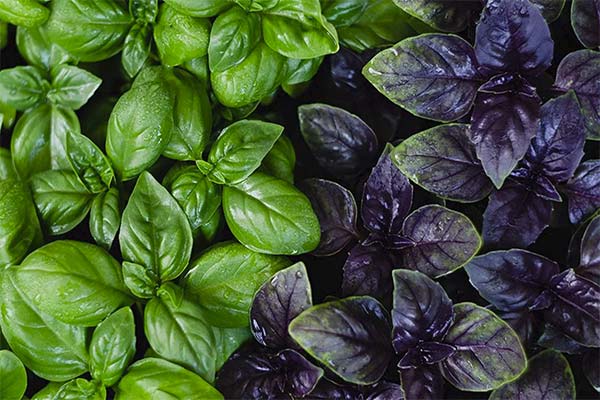
Basil is commonly thought of as being native to South Asia. For more than five thousand years, the plant has been used in cooking and medicine in India and Iran. In Europe, this spice arrived in the IV century. It was brought by soldiers of Alexander the Great. It took some time for basil to spread around the continent.
This herb had its own meaning in different countries. It is known that in India, basil was considered a favorite plant of the god Vishnu. Hindus believed that the spice was a kind of "ticket" to heaven. In addition, the use of basil was believed to protect against scorpion and snake bites.
The ancient Egyptians used it for mummification. Archaeologists have found wreaths of basil at excavations in the pyramids. In the ancient world, the spice symbolized prosperity, love, fertility. And the Greeks worshipped it and considered it the property of the gods.
In medieval Europe, at first basil was treated as a curse. People believed that a person who inhaled the scent of the plant would turn into a scorpion. Only a few centuries later, people began to use basil in many countries. Now this spice is used by cooks around the world. Basil is very popular in Italy, France, Greece, Georgia and Spain.
Types of
At the moment there are about 150 species of this spicy plant in the world. The most popular varieties are:
- Fragrant. Distinguished by its fragrance, it is grown in many countries around the world.
- Cinnamon. Leaves have a cinnamon flavor, it is also called Mexican basil.
- Thai. Distinguished by a pronounced anise smell, is common in cooking Asian countries.
- Lemon. Characterized by a strong lemon flavor and aroma.
- Purple or Regan. The leaves of this variety are purple-red in color. Common among Caucasian peoples, stands out for its appearance and spicy taste.
What is the difference between green basil and purple basil?
All types of basil can be conditionally divided into two: plants with green and purple leaves. On store shelves you can find both. They are used in the preparation of dishes around the world. But, how do they differ from each other, besides the obvious difference in color?
Basil with green leaves is more commonly used in European cuisines. This is due to its mild flavor and pleasant aftertaste. It is often used in the preparation of exquisite pastry desserts. Basil with purple-red leaves has a more pungent flavor. Therefore, it is more often added by cooks specializing in Asian and Caucasian cuisine. This type of seasoning perfectly complements the taste of meat and fish, and is a part of many sauces and seasoning mixes. The flavor of green and purple basil is largely determined by the varieties, not the color of the leaves. Therefore, it is not advisable to look for differences in it by such a criterion. It is true that green basil is considered more aromatic.
Most often this herb plant is added to sauces, salads, meat and fish dishes. Basil makes everything more flavorful. True, the taste of the leaves of the spice is specific and not everyone likes it.
Which basil is more useful: green or purple?
In terms of chemical composition, purple and green basil are not very different from each other. Scientists believe that the plant with purple leaves is slightly healthier because of the presence of anthocyanins. These substances can protect the body from aggressive groups of atoms, acting as antioxidants. Eating purple basil serves as a prevention for many pathologies, cancer being one of them. In addition, doctors recommend including it in the diet of people suffering from various ailments.
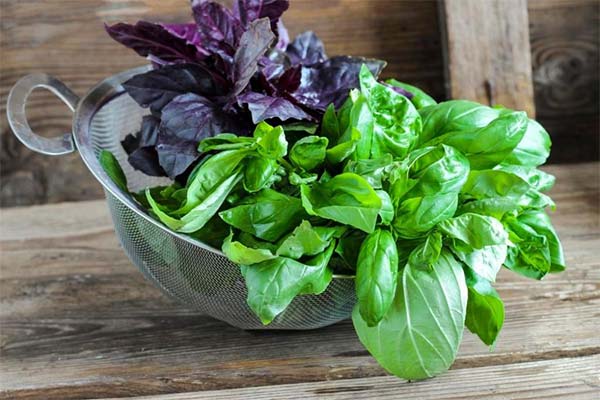
Both species are rich in vitamins A, C, PP, and essential oil. They also include a whole complex of vitamins and minerals. Their deficiency has a negative effect on the work of the human body. These substances are potassium, magnesium, calcium, etc. For example, phylloquinone has a positive effect on blood clotting function and metabolism. Basil contains a large amount of this substance in its composition.
This spicy plant is able to have a positive effect on the work of the whole body. The use of basil is observed:
- Improved digestion.
- Improved immunity.
- Relief of the course of seasonal inflammatory processes (relief of flu and sore throat symptoms).
- Stabilization of the amount produced by hormones.
- Strengthen the nervous system.
- Increase the body's ability to fight germs and inflammatory processes.
- Improve the microflora in the mouth, the prevention of worms.
- Slow down the aging of the skin.
- Improvement of memory.
The benefits of basil for women
Basil has properties that can alleviate pain during menstruation. In addition, it calms the nervous system. This spicy plant is low in calories and is suitable for women who want to lose weight. Basil speeds up the metabolism and promotes the burning of fat deposits. The oil of this spice plant is used in the cosmetic industry. It gently cares for the skin and fights small wrinkles.
Basil Benefits for Men
Sexopathologists strongly advise to include basil in the diet. It has a positive effect on male strength and promotes sexual desire. Green and purple basil are considered to be excellent aphrodisiacs. Even ancient Indian healers knew about the effect that the spicy herb has on men. The substances in the composition of basil help to improve the work of the organs, the circulatory system, regulate sugar levels. All this has a positive effect on male potency. That is why in the diet of the stronger sex should always be present greens.
The benefits of basil for pregnant women
It is known that basil can provoke certain processes in the uterus and lead to miscarriage. For such a development, it is necessary to eat a very large amount of the spicy plant. It has been proven that one pinch of the spice can not cause such consequences. It is worth refraining from using basil for women who are allergic to essential oils. Otherwise, the spicy herb has a positive effect on the body of the pregnant woman. Its components will help to cope with anemia, migraines, increase immunity. Small doses of the spicy plant can not have a negative effect on a woman's body, but before using it, it is better to consult with your doctor.
Basil is often used for weight loss. This was mentioned above in passing. It is known that, in addition to the leaves, the seeds of the spicy plant can be used. They are a natural absorbent and contribute to the removal of toxins and impurities from the body. At the same time, excess fluid is eliminated. The composition of the seeds includes a substance that can reduce the feeling of hunger.
For weight loss, the seeds of basil are poured with water. After they are saturated with it, they are added to confectionery and drinks. Such a mixture is excellent for cleansing the body. Sometimes for weight loss the seeds are mixed with milk and drunk before going to bed. This drink has a laxative effect.
When trying to lose weight, it is worth remembering that the best effect can be achieved by combining a proper diet and sports. Basil seeds cannot have the desired effect without these two important ingredients. In addition, it is important to keep moderation in everything. A large amount of basil can have a negative effect on the stomach. It is best to use this spicy herb with other products.
Basil should not be eaten by people
- with cardiovascular problems;
- Those who have had a heart attack or stroke;
- Are allergic to the components of the plant;
- Those who suffer from high blood pressure;
- people with epilepsy;
- People with diabetes.
If possible, it is better to give preference to basil with purple-red leaves. It is more rich in useful substances.
By the way, basil can be used in the home. Its strong smell deters flying insects. Growing potted basil on a windowsill will keep flies and mosquitoes away. In addition, the leaves of the plant can alleviate itching from insect bites.
Can they be combined in dishes
Green and purple basil are used in cooking everywhere. As a rule, they are added to dishes fresh or dried. This spicy plant is added to salads, soups, meat, fish, drinks. It is important to observe this temperance. It is best to add the leaves to the dish just before serving, and it is recommended to tear it with your hands. By the way, basil is often included in dressings. The most famous sauce based on this spicy herb is pesto.
Basil goes well with vegetables, meat, fish and other leafy salads. It is often used as a decoration. It is a great complement to other seasonings. For example, it is used with rosemary, thyme, marjoram, tarragon, parsley and other herbs.
Fresh basil is most appreciated in cooking. But it is not always available in our latitudes. Therefore, many people are engaged in the preparation of herbs for the fall and winter period. Basil can be dried, using a variety of techniques. It is dried outdoors, in an electric dryer, microwave and oven. The herb will retain its flavor for six months. The easiest way to prepare herbs is considered freezing. Basil leaves are usually frozen whole or chopped. Sometimes they are sautéed with water or olive oil.
As a rule, green and purple basil are not combined. The first is more often used in dishes of European cuisines, the second - in Asian and oriental viands. There are no serious contraindications to the ban on combining them in dishes. Some people insist that it just does not make sense. But if there is a desire and the opportunity to experiment, then why not.
The best varieties of green basil
There are over 150 varieties of basil today. This section will look at the most popular species with green leaves:
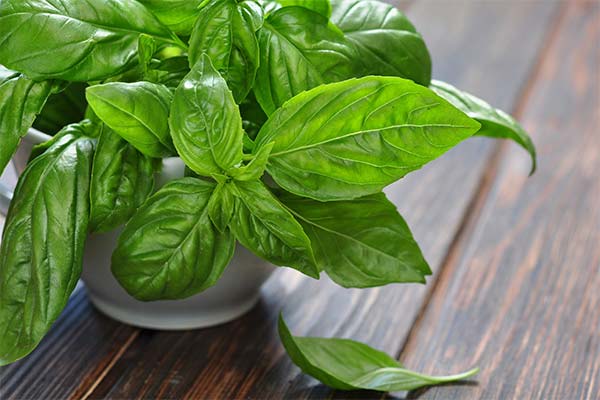
Broadleaf .
Distinguished by a pronounced aroma of pepper. Gives a rich harvest - 300 g per bush. It gets its name because of its large and wide leaves, rich in essential oils and vitamins.
Eugenol
The stem of this variety can reach a height of 90 cm. It is grown in Georgia and the Kuban region. The leaves have a rich dark green color. For a good harvest it needs a lot of sunlight and moisture.
Velvet
Distinguished by its exquisite taste and menthol aroma. The plant reaches 30 cm in height. The leaves are a rich green color, measuring up to 8 cm. Basil of this variety grows well in the open ground in regions with a southern climate.
Genoese
Suitable for growing in pots. Its leaves are green with a glossy surface. Best for making the classic Italian pesto sauce.
Cinnamon flavor.
Was bred relatively recently. Gives a good harvest, about 300-400 grams per plant. Distinguished among other varieties of bright cinnamon flavor. Also relatively fast yielding. The trunk can reach a height of 40 cm.
Small-leaved
Is unpretentious and suitable for temperate climates. Plants can reach a height of 25 cm. Leaves are small and elliptical in shape. It stands out for its mild flavor and peppery aroma with hints of cloves. Can be grown as a houseplant.
Greek
The bush of this variety of basil has a spherical shape. It stands out for its spicy taste. It is particularly popular with professional Italian chefs. They add it to sauces, salads and marinades for meat, fish.
The best varieties of purple basil
Purple basil (like green) has many varieties. This section will cover the most popular ones:
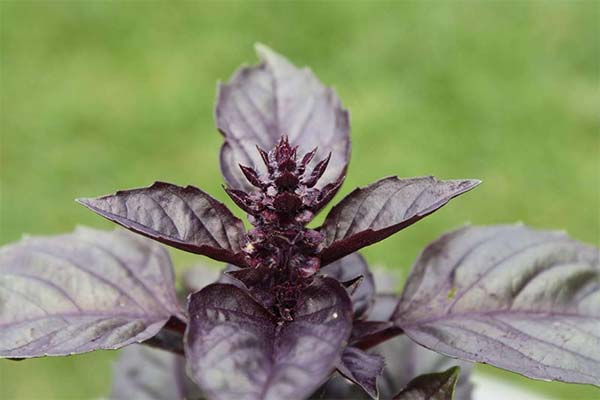
Yerevan .
This variety is very popular among professional chefs. It combines the flavor of tea and black pepper. The leaves of this shrub have a bright purple-red color. They are oval in shape and have teeth. Grown in the south in the open ground or in the greenhouse. Can give a harvest 2-3 times a season. Sometimes it is used for decorative purposes.
Anise
The name of this variety speaks for itself. It has a bright aroma of anise, reaches a height of 40 cm. The leaves are purple in color with a silver cast. Basil is grown indoors and outdoors.
Ararat
The plant can reach a height of 60 cm. The leaves have a dark purple color. This variety is very fragrant. The first harvest is already two months after planting. Can be grown in room conditions. It is added in the preparation of cheeses, soups and salads.
Dark Opal
Plants of this variety can reach 60 cm in height. It stands out with a rich aroma of pepper with notes of cloves and a pleasant balanced taste. The color of the leaves is deep purple, the shape is oval with denticles on the edges. This variety gives a good harvest. Chefs use it in the preparation of sauces, vinegars, salads, etc.
Baku
Combines the aroma of cloves with hints of mint. Its leaves are bright purple with black inserts. This variety of basil grows quickly, but requires careful care. In cooking, it should be added in moderation. The concentrated flavor can give a specific flavor to a dish.
Sacred
This variety of basil is native to the plant's homeland of India. It is also found in Arabia and Indonesia. The leaves are egg-shaped with denticles around the edges and are covered with fine hairs. They can be up to 5 cm long and are purple in color. This variety tastes like cloves and has no strong aroma. It grows quickly with proper care and regular watering.
Growing basil: planting and care
This spicy herb can be grown not only on the garden plot, but also in the city apartment as a room plant. For this purpose, cuttings are best suited. They are put in water for a week, and after 15 days already planted in the ground.
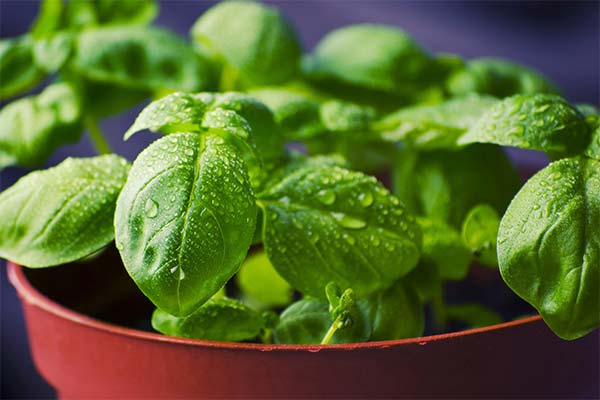
For the plant it is necessary to provide heat, regular watering and sunlight. For fertilizing, a standard fertilizer from a flower store will do.
Gardeners to grow basil most often use seedlings or plant seeds immediately in the soil. Spicy herb likes heat. The plant begins to flower in mid-summer.
To grow basil on a garden plot, it is necessary to choose a sunny place with fertile soil. The soil on which potatoes or tomatoes used to grow will be suitable for this.
Before the winter cold, it is necessary to prepare the soil for future planting, excavate and fertilize. In spring, the soil will need to be fertilized again with mineral fertilizers and leveled.
As early as the beginning of April, it is necessary to prepare the seeds, especially if planting in the open ground is planned. To do this, you will need boxes with holes for drainage, at the bottom of which you should lay expanded clay. Then the containers should be filled with soil with fertilizer. It is desirable to hold the seeds in a solution of manganese solution for 2 hours before planting. After planting, cover the box with transparent film. For normal development of basil in the room, it is necessary to maintain a constant temperature. It should be equal to 27 degrees Celsius (minimum). The seedlings should be abundantly watered.
If the germination is successful, the basil can be planted in the open ground to a depth of 10 cm at the end of May. A distance of 25 cm between the bushes should be maintained. It is important not to forget to monitor the moisture content of the soil and the temperature regime. For the bushes to be lush, it is necessary to prune the top of the plant after the appearance of six leaves.
In addition, basil can be grown in the greenhouse at 25 degrees Celsius. It is simply necessary to place pots with seedlings in the room before planting in the open ground. After it gets stronger, it is necessary to carry out the procedure of hardening the plant. This is usually done a week before transplanting.
The growth of the plant can interfere with weeds. Therefore, they must be removed in a timely manner, and the bushes themselves should be periodically fertilized with superphosphates (especially before the first flowers).
«Important: All information on the site is provided solely for introductory purposes only. Before applying any recommendations, please consult with a specialist. specialist before using any of the recommendations. Neither the editors nor the authors shall be liable for any possible harm caused by materials."


